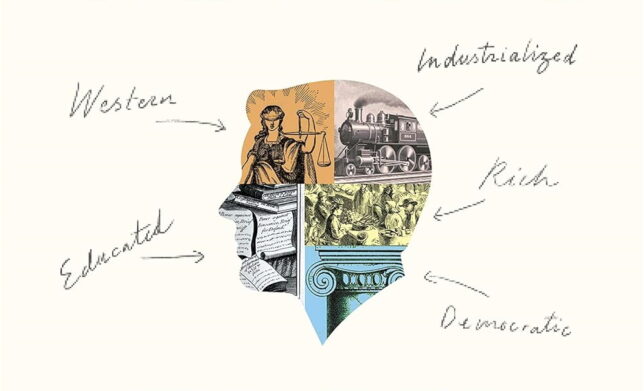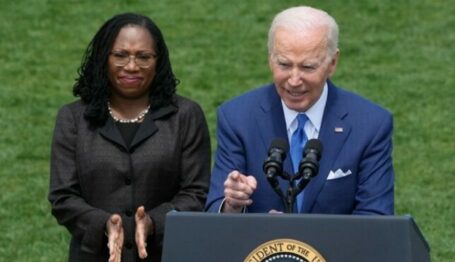Special Report
On the Elites and Counter-Elites: WEIRD
 Cover of book "The WEIRDest People in the World: How the West Became Psychologically Peculiar and Particularly Prosperous" (2020) by Joseph Henrich.
Cover of book "The WEIRDest People in the World: How the West Became Psychologically Peculiar and Particularly Prosperous" (2020) by Joseph Henrich.

On the Elites and Counter-Elites (full series)
WEIRD | Polling the Elites | What Makes an Elite?
The Elites and California Disease | Whither the Counter-Elite?
“Let me tell you about the very rich. They are different from you and me.”
—F. Scott Fitzgerald
Since even before the author of The Great Gatsby wrote that line in the mid-1920s, Americans have seen wealth, especially “old money,” as the dividing line between the “elites” and the “masses.” In recent decades, broad prosperity has driven much of the American middle class into financial positions formerly considered upper (at least lower-upper) class. But what if financial liquidity alone stopped being the defining feature of America’s elites? Increasingly, postgraduate education and proximity to cities of major cultural and economic influence define “elite” status more than even money does. And the new elites are just as “different from you and me” as Fitzgerald’s old-money rich. Survey research shows that these new elites are radical-to-extremist on certain social-liberal and environmental-left policies.
But there is also a new breed of “counter-elites,” ideologically conservative and formed by different institutions than the left-wing elites of the Upper West Side, Beverly Hills, the Presidio, and Chevy Chase. But the counter-elites can lose their own moorings and become “different from you and me” in their own ways. Whichever class of elites, and whichever political movement that class of elites dominates, holds closest to the view of “normal” held by an America that is changing will seize a critical advantage over its rival. Whichever succumbs to its misreading of the political history of California will yield a major advantage to its rivals.
WEIRD
The people who set the cultural and political tone in America are very, very weird. Not just “weird,” as in “unusual,” but “WEIRD” — Western, Educated, Industrialized, Rich, and (small-d, in theory) Democratic.
Elite secularism and demographic pluralism are nearly uniquely post-Enlightenment European-American. The West was the first major region to devise secularism, exporting it internationally under the banner of Communism (a German invention) in many cases. Even places like China and Japan that may be nominally more irreligious than Europe or America are frequently more ethnically exclusionary than the West, especially the elite circles that direct public policy in the West.
Elites are forged in at least post-secondary but often postgraduate educations. In recent decades they are educated in a small handful of highly selective private universities. These obviously include the Ivy League, but the Ancient Eight are joined by universities such as Stanford, the University of Chicago, Duke, and similar schools. Expanding the university universe further, highly selective and prestigious government-run colleges, like the University of California, Berkeley; the University of Virginia; the University of North Carolina, Chapel Hill; and the University of Michigan, Ann Arbor may be added to this group of elite-forming educational institutions.
The “laptop class” that is the professional expression of the cultural and political elite—journalists, academics, and consultants, among other professions that could famously “work from home” during the COVID-19 lockdowns—relies on an industrialized society, even if other people (who are not elites, regardless of their incomes) actually do the industry. Without mineral-extractive industries, factories and factory labor, and international shipping, the laptops on which the would-be-elites of the laptop class work would not exist, to say nothing of the rest of their lifestyles.
A laptop class of elites doing “knowledge work” relies on a rich society to pay for these nontangible service goods. And the elites can become quite high-income, and high-income in large enough numbers to drive the political calculations of the Democratic Party. There is a reason why during his 2020 campaign President Joe Biden vowed to raise taxes on only households making over $400,000 per year, well into the oft-maligned “One Percent”: Many of the lower six-figure-earning “elites” planned to vote for him.
How “Democratic” the elites are is up for debate. While they profess fealty to “Our Democracy,” one may honestly question the extent to which they are merely capital-D Democrats (or members of other countries’ parties of the high-status Left, like Canada’s Liberals, Britain’s Labour, France’s Renaissance, Italy’s Partito Democratico, or Germany’s Alliance 90/The Greens). What is clear is that the class of elites in America and the broader West could only have arisen from a small-d democratic society.
Back in 2016, Capital Research Center and political scientist Michael Barone looked at a selection of posh and highly educated locales—called “SuperZips” by social scientist Charles Murray—to see whether the elites who lived there were more right-wing or left-wing in their political donations. In what was (then) perhaps a surprise, their contributions were more left-wing, despite the regions’ wealth. In the four culturally and politically influential metropolitan areas of New York, Los Angeles, San Francisco, and Washington, DC, the breakout was even more left-wing.
What does this mean for policy and politics, and what does it mean for culture? New survey data from Scott Rasmussen’s RMG Research commissioned by the Center to Unleash Prosperity suggest the national elite are profoundly weird — and WEIRD — by the standards of the American population, with potentially major consequences for culture and politics. But the weird elites Rasmussen has surveyed win far less often in public policy than one might expect given their otherwise-hegemonic position. This suggests the existence of a counter-elite that can oppose the WEIRD-elite.
But in the background of American politics lies a mind virus deranging the WEIRD-elite and driving the counter-elite to self-sabotage. One can call it the “California Disease,” since it relies on a fundamental misreading of the history of capital-P Progressivism’s long-standing Golden State. (It has long been Big Labor’s Golden State as well, which is not a coincidence.) One set of elites believes that manipulating the dials of national demographics will turn the country into California, and the other set fears such a transformation. Both are wrong.
In a most unexpected development following the political rise of former President Donald Trump, the theory of an “Emerging Democratic Majority” built on ever-increasing proportions of Latinos and continued progressive dominance with other ethnic-minority groups has not only not come to pass but perhaps even reversed. The faction that adapts to a changing American “normality,” rather than pushing a permanent revolution or desperately scrambling to restore a lost idyll (that actually wasn’t), will gain the advantage.
And that adaptation may not look like one might expect, if past is prologue.
In the next installment, polling for the Committee to Unleash Prosperity suggests that the circles that elites are living in select for left-wing radicalism.



